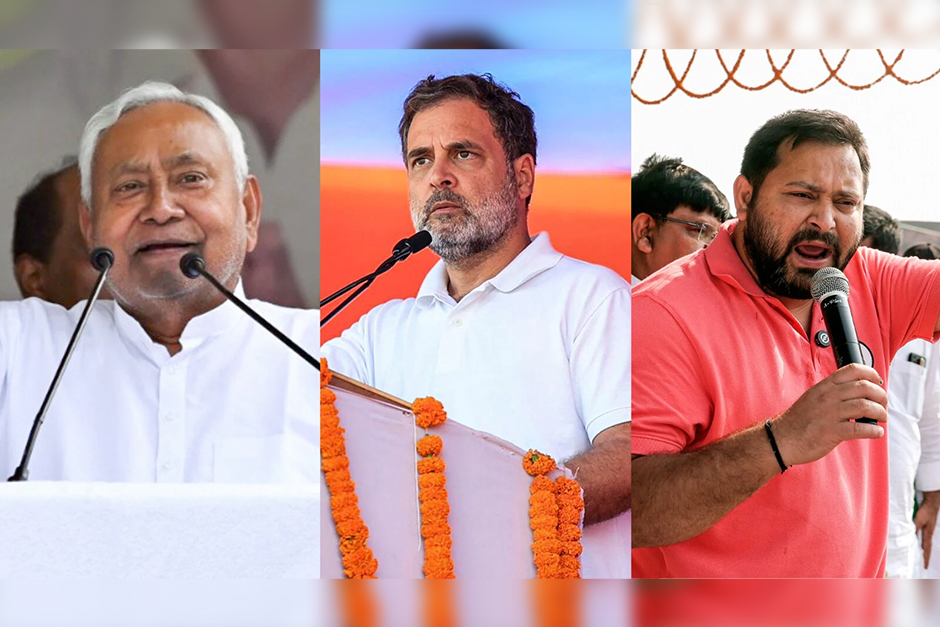The political dust has finally settled across Bihar as the high-octane campaigning for the third and final phase of the Assembly elections drew to a close. With just hours left until voters head to the booths, the leaders and parties have made their final appeals, leaving no stone unturned in what has been one of the most keenly watched electoral battles in recent memory. The fate of 78 constituencies, encompassing regions like Seemanchal, Kosi, and Mithilanchal, now rests with the electorate, whose verdict will ultimately determine the composition of the next government in Patna.
The run-up to this decisive phase has been marked by an unprecedented level of campaigning, with top national and regional leaders crisscrossing the state. Both the ruling National Democratic Alliance (NDA) and the opposition Mahagathbandhan (Grand Alliance) have unleashed their full firepower, engaging in fierce exchanges and robust rallies aimed at swaying the crucial undecided voter.
High-Stakes Campaigning and Star Power
The final phase saw an intensified push from the star campaigners of both alliances. For the NDA, Prime Minister Narendra Modi led from the front, holding multiple rallies and reiterating his government’s development agenda, along with Chief Minister Nitish Kumar, who focused on his track record of good governance, law and order, and schemes benefiting women and various social groups. Their addresses often highlighted the achievements of the “double engine” government, contrasting it with what they termed the ‘jungle raj’ of the past.
On the other side, Rashtriya Janata Dal (RJD) leader Tejashwi Yadav, the Mahagathbandhan’s chief ministerial face, continued to draw large crowds, maintaining his focus on youth unemployment and promising 10 lakh government jobs if elected. Rahul Gandhi of the Congress also joined the campaign, lending national weight to the opposition’s narrative against the incumbent state and central governments. The campaign saw sharp personal attacks, allegations, and counter-allegations, transforming the political landscape into a charged arena. Roadshows, public meetings, and last-minute door-to-door canvassing dominated the final hours, as parties made desperate bids to consolidate their support bases and win over fence-sitters.
Key Issues Driving the Narrative
Beyond the rhetoric, several key issues resonated deeply with the voters during this election cycle. Unemployment emerged as a central theme, particularly leveraged by the Mahagathbandhan, which consistently attacked the government for failing to create enough jobs and address the distress of migrant workers. Tejashwi Yadav’s promise of 10 lakh government jobs became a significant talking point, forcing the NDA to also address the issue with its own commitments for job creation.
For the NDA, ‘Sushasan’ (good governance), development, and the improvement in law and order under Nitish Kumar’s rule were core campaign planks. They frequently invoked the perceived ‘dark days’ before their tenure, attempting to remind voters of past instability. Issues such as agricultural distress, the handling of the COVID-19 pandemic, and economic recovery also featured prominently in the manifestos and speeches. Caste dynamics, an inherent part of Bihar’s political fabric, continued to play a subtle yet significant role, with parties carefully crafting their strategies to appeal to various social groups without overtly highlighting caste divisions in public discourse.
As political analyst Dr. Aruna Singh observed, “This election has shown a complex interplay between traditional identity politics and emergent issues like employment and governance. Voters are looking for tangible change, but historical loyalties still hold considerable sway, making the final outcome difficult to predict.” The battle has been not just for seats but for the narrative itself, with both alliances striving to define the core choice for the electorate.
What Lies Ahead: Voting and Verdict
With the campaigning now a memory, all eyes turn to Saturday, November 7th, when voters will cast their ballots in the final phase. The Election Commission has put in place stringent measures to ensure a free, fair, and safe election process, including strict adherence to COVID-19 protocols. After the final votes are cast, the focus will shift to the meticulous process of securing the Electronic Voting Machines (EVMs) until the counting day.
The ultimate judgment will be delivered on November 10th, when the results for all 243 Assembly constituencies will be declared. The outcome of the Bihar polls is crucial not just for the state but also carries significant implications for national politics, especially ahead of the upcoming general elections in 2024. As Bihar prepares to usher in its next phase of governance, the spirit of democracy once again stands tall, reminding us of the power of the ballot box.




